CATHEDRAL QUARTER TRAILS – ST MARY’S GATE
DERBY CATHEDRAL QUARTER – 2 ST MARY’S GATE
St Mary’s Gate and the Cathedral Quarter – Stylish, independent shops, great places to eat and drink, valued professional services and impressive historical landmarks. Derby’s Cathedral Quarter has it all.
Looking up St Mary’s Gate

St. Mary’s Gate took its name from the ancient church of St. Mary, one of the six churches in Derby recorded in the Domesday Book of 1086. The church stood on the corner of St Mary’s Gate and Queen Street, almost opposite what is now Derby Cathedral. Little is known about the church as it disappeared from the records during the medieval period.
A rather narrow street, St Mary’s Gate is one of Derby’s most important historic thoroughfares, containing many fine buildings. Traditionally known as the home to legal practices, it remains well-populated with solicitor’s businesses to this day.
The Shire Hall, near the bottom of the street, later known as the Crown Hall, was designed by George Eaton of Etwall and completed in 1659. Originally it was used for concerts, plays, and gatherings, as well as courts and assizes. This ended in 1714 when the new Assembly Rooms were built. The buildings then became exclusively a Crown Court. The courts closed in 1989 and moved to the Morledge and, after going into decline for several years. They have been superbly renovated and converted into the city’s Magistrates’ Court.
St Mary’s Gate
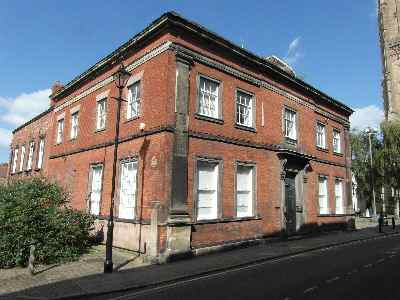
For many years this was the home of Robotham & Company. A firm of family solicitors who had practised for more than 150 years. Before the firm’s recent acquisition by Flint Bishop, whose offices in King Street are only a short distance from the building in which William Robotham first practised law in 1837. The building was eventually demolished to make way for the inner ring road.
It was here that Thomas Evans, born in 1723 and educated at Trinity College Cambridge, lived. His family at that time was quite well-to-do, acquiring a steady income primarily from their farming and mining interests at Bonsall. It was through the entrepreneurial skills of Thomas Evans that they became very wealthy.
With travel much slower in those days, Thomas Evans moved to Derby to be nearer his business interests. His home at 3 St Mary’s Gate, became the headquarters of the Crompton and Evans Bank. This was formed, in 1771, when he entered into a partnership with Samuel Crompton. Eventually, Crompton tired of the business and the bank became known as Thomas Evans and Son. His son William had joined him in the business.
Richard Arkwright and Jedediah Strutt had gone into partnership to build the ground-breaking mill at Cromford. Both were customers of the bank and for a period Evans lent money to Arkwright. The success of the two partners no doubt helped to convince him he should enter the highly lucrative business of cotton spinning.
Probate House
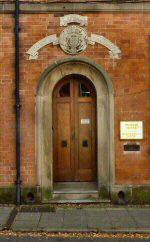
Moody and Woolley were established in 1846 in the Corn Market, although only under that name since 1884. The firm has been based in St Mary’s Gate for most of the 20th century. In 2004, they acquired the neighbouring Probate House with its impressive coat of arms. It had become the Court of Probate in 1857 and remained as the District Probate Registry until 1928. Later it was used as an accountant’s office. Following extensive restoration, it now houses the solicitors, probate and commercial departments.
A macabre incident took place at Moody and Woolley’s office in May 2013. When the badly decomposed body of a suspected burglar was found in the chimney stack. The staff had initially assumed that the bad smell was that of a dead pigeon and opened the window. But the following week as the smell got worse and the office was full of flies they called a builder. At the inquest, it was said the body had been stuck in the chimney for several weeks.
Cathedral Quarter Hotel
Designed in 1893 by John Storey, the county architect, the Old County Offices, were built in 1895/6 for £26,000 for the newly established Derbyshire County Council. In the 1950s, the council moved its headquarters from St Mary’s Gate in Derby to Matlock. It continued as Borough and later City Council offices. In 1996, it was taken over by the Derbyshire Police as an office and also housed the Police Museum.
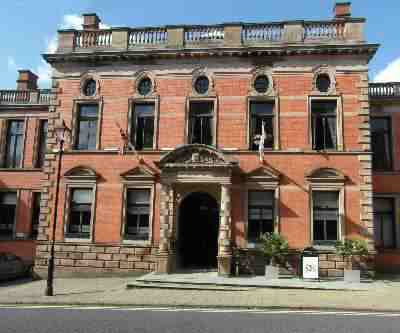
The Finesse Collection purchased the building in 2006, and after spending two years converting it into a hotel. It was opened in May 2008 as the Cathedral Quarter Hotel. Following its sympathetic conversion, it rates as one of the finest hotels in the county.
The hotel enjoyed royal patronage, when Her Majesty the Queen dined there, on Maundy Thursday, 1st April 2010. After presenting pensioners with Maundy money at Derby Cathedral, in what was believed to be the 800th anniversary of the ceremony.
New County Offices
On the opposite side of the street is the impressive-looking New County Offices, built in 1911, some fifteen years after the Old County Offices. It cost 30,000 and housed the Derbyshire County Council until the Council departed for their new headquarters in Matlock in 1955. After that, the building was occupied by the South East Derbyshire Rural District Council. It is now the home of probationary services.
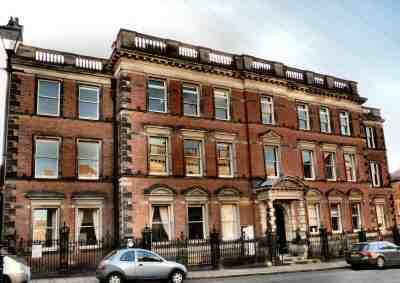
Magistrates Court
In the mid-17th century, St Mary’s Gate was selected as a suitable place to build a Shire Hall. This later became known as the County Hall. It was designed by George Eaton of Etwall and completed in 1659. Originally it was used for concerts, plays, and gatherings, as well as courts and assizes. After that, St Mary’s Gate was traditionally known as the legal quarter of Derby.
Assize Courts originated in the reign of Henry II and were courts with a judge and jury. They sat with the authority of the monarch, bringing the King’s Justice to the people. Initially, the assizes for both Derbyshire and Nottinghamshire were held in Nottingham. However, in 1328, the Sheriff of Nottingham was instructed to provide suitable facilities in Derby. The joint assizes were then held alternatively in Nottingham and Derby, until
1566, when separate assizes were held.
In 1714, when the new Assembly Rooms were built, the buildings became exclusively a Crown Court. An inn was added on one side around 1795 and Judges’ Lodgings on the other side in 1811.
The courts closed in 1989 and moved to the Morledge. The buildings after going into decline for several years have been superbly renovated and converted into the city’s Magistrates’ Court.

Boden’s Pleasance Plaque
Bold Lane, which used to be called Bolt Lane where medieval fletchers made their bolts or arrows. It was the site of Boden’s Pleasance, now mainly covered by the Parksafe car park. The Pleasance was a small green donated to the people of Derby by Mary Shuttleworth, widow of Henry Boden. He was a lace magnate and member of the Temperance Union and benefactor who died in 1908.

The park opened two years later and had wrought iron gates decorated with Boden’s crest. The gates are still there at the front of the car park.
Established in 1825, Boden’s Mill was the only lace mill in Derby. Following an amalgamation, the mill closed down in 1958. During the First World War, it produced 22,000,000 square yards of mosquito netting.
Saint Mary’s Mill once stood on the site before Markeaton Brook was culverted. It was also near this point, where scolds (quarrelsome women) and tradesmen who broke the law were immersed in Markeaton Brook using a ducking stool. It was then known locally as Cuckstool Mill because of the adjacent ducking stool.
Former Theatre Royal/Gospel Hall
The Royal Theatre, as it was originally called, was built in 1773, paid for by James Whiteley and opened on 13 September of that year. It was converted from a malthouse, which had been built about 60 years previously. The first play performed at the theatre was Oliver Goldsmith’s ‘She stoops to conquer.’ Famous actors came up from London to perform for short seasons. It closed in 1864, possibly because it was too small, and was sold to William Wilkins, and re-opened as a Gospel Hall. When this was re-located after the Second World War, it became a library and then a Magistrates’ Court, which closed in 2003. It is now a fashionable restaurant, Iberico World Tapas, which in September 2014 earned itself a mention in the prestigious Michelin Guide – despite only being open for less than a year. The Iberico World Tapas restaurant closed its derby Branch in 2018.
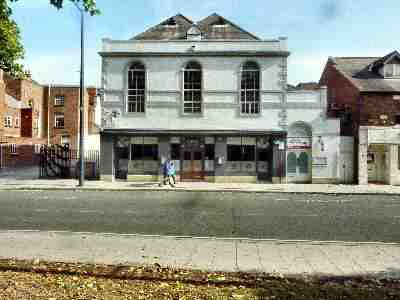
Derby Museum and Art Gallery
Derby Museum and Art Gallery run a programme of special exhibitions supporting permanent displays relating to the city’s archaeology, porcelain, paintings, history, local regiments, geology and wildlife.
It contains the world’s finest collection of Joseph Wright paintings, the internationally famous Derby-born artist. These include portraits, landscapes, subjects from literature and scenes of industry and scientific equipment. The relatively new Ceramics Gallery provides an additional attraction and now incorporates a highly acclaimed cafe. Bonnie Prince Charlie’s Room commemorates the important role played by Derby in the Jacobite Uprising of 1745.
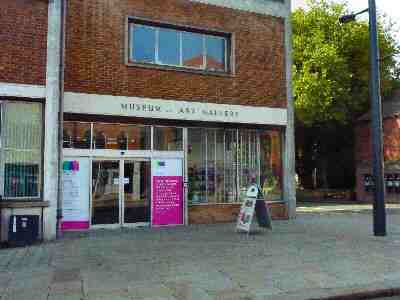
The Strand
The Strand came into existence when the decision was made to culvert Markeaton Brook from Sadler Gate Bridge to St James’ Bridge, forming a new street in the process. Sir Abraham Woodiwiss, who was Mayor of Derby from 1880-82, built the Strand including the Strand Arcade and parts of St James’ Street in 1878-81 as a commercial venture.
The architects were Giles and Brookhouse, except for the Arcade, which was designed by John Story. Alderman Sir Henry Bemrose laid the foundation stone on 30 September 1878. The great curve of the building frontages, the balustrade entrances, the highly decorated stonework and the neatly arranged windows gives a real feeling of anticipation. For the visitor and local people alike, when they walk along the street.
It is named after the Strand in London which acquired its name because it originally followed the line of the Thames. The Old English word ‘strand’, means shore. The shallow bank of the once much wider River Thames was much closer to the street than at present.

A recent city project to restore Derby’s historic city buildings and shop fronts to their former glory, which has been recognised nationally is no more apparent anywhere than when walking down the Strand. Unsurprisingly every shop was occupied at the time of writing.
Strand Arcade
The Victorian Strand Arcade was created in the early 1870s. It was fashioned in ‘debased classical style’; to replicate London’s Burlington Arcade from designs by John Story and was built in 1880.
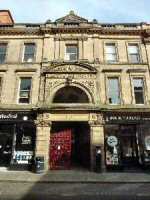
The Strand Arcade links Sadler Gate and the Strand and has been described as a unique link between different ages and city cultures. Sadler Gate dating from medieval times winds its way from Iron Gate to Bold Lane in an informal, haphazard fashion. This contrasts with the formal appearance of both the Strand and the Strand Arcade, with its tall and impressive stone, three-storey entrance off Sadler Gate. The exit into the Strand is equally agreeable.
St James’ Street
Originally, St James’ Street was known as St James’ Lane. It was described in the 1860s as a narrow, unsightly and unsavoury alley before it was widened. The work was paid for by the building of St James’ Hotel. After completion, it was renamed St James’ Street and became an elegant shopping thoroughfare.
In February 1957, a mini earthquake hit Derby, buildings started to shake and walls, ceilings and floors shivered and shook. People frightened by the commotion ran into the streets. St James’ Street had to be closed so that heavy coping stones, each weighing about two hundred pounds, that had been dislodged, could be made safe.

